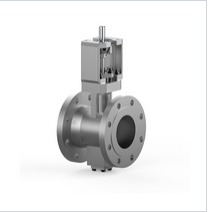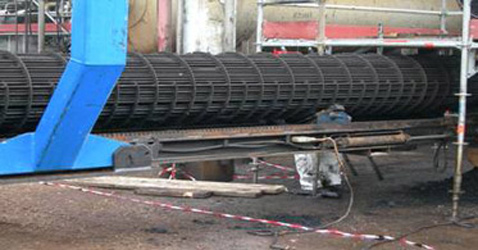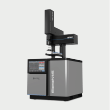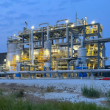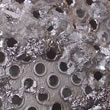Feb-2023
Crude oil processing scheme for reducing operating costs in the CDU
Development of crude oil distillation processing schemes to significantly reduce external energy and stripping steam demand.
Sunil Kumar and Avinash Mhetre
CSIR-Indian Institute of Petroleum
Viewed : 3045
Article Summary
The crude distillation unit (CDU) is the highest throughput processing unit in the refinery to fractionate whole crude slate into desired boiling range fractions. Conventional processing of crude petroleum oil through the CDU consumes huge amounts of thermal energy and stripping steam, so refiners are always looking to improve the CDU’s operation and energy efficiency to improve their gross margin and reduce carbon emissions.
There are many approaches to CDU energy and operating cost reduction. Some widely used approaches include optimising the operating conditions of crude distillation columns, improving the integration of distillation and heat exchanger network (HEN), improving the design and retrofitting of HEN, and synthesizing the improved crude processing schemes (CDU design configuration) further to reduce the operating cost of the optimised process.
The CSIR-Indian Institute of Petroleum (CSIR-IIP) has developed a new crude oil distillation processing scheme that takes innovative steps to tackle these issues. These include adding process water to desalted crude, superheating flash drum (FD) vapour, and utilising the stripping effect of superheated hydrocarbon vapour to reduce external energy and striping steam demand significantly. Patents on the developed scheme have been granted in India and the US.
Common refinery crude oil processing schemes
The three most common crude oil processing schemes in refineries are conventional, prefractionation column integrated (PFCI), and flash drum integrated (FDI) schemes, the schematic of which is shown in Figure 1.1 Crude oil is preheated in HENs using hot process streams. The preheated crude oil is processed in the desalter to remove the salt using water.
The desalted crude oil is further heated using HEN. The heated crude is routed to the atmospheric distillation column (ADC)-fired furnace in the conventional scheme, to the prefractionation column (PFC) to remove light naphtha in the PFCI scheme, and to the flash drum in the FDI scheme. Depending on the crude oil processing scheme, the desalted crude oil/PFC bottom/FD bottom streams are routed to an ADC-fired furnace for partial vaporisation. The light naphtha from the PFC is routed to the naphtha stabiliser column, whereas the FD vapour is routed to the ADC either at the flash zone or near the kerosene draw. The partially vaporised crude oil is routed to the ADC's flash zone.
The vapour from the flash zone is separated into distillate products, namely light naphtha (LN), heavy naphtha (HN), kerosene, light gas oil (LGO), and heavy gas oil (HGO). The distillate products are processed in their respective side strippers to remove lighter components. The stripping steam is used at the ADC bottom to recover the diesel range material from the liquid falling to the ADC bottom from the flash zone. The long residue (LR) product obtained from the ADC bottom is further heated in a vacuum distillation column (VDC)-fired furnace along with coil steam. The heated crude is processed in the VDC for its fractionation. Products like vacuum diesel (VD), light vacuum gas oil (LVGO), and heavy vacuum gas oil (HVGO) are generated in the upper section of the VDC, and slop and vacuum residue (VR) in the lower portion of the VDC.1
Proposed common crude oil processing scheme
CSIR-IIP has developed a new crude oil processing scheme to increase the ADC distillates yield and reduce energy consumption without compromising product quality (see Figure 2). Three main changes were proposed to improve energy and operating cost efficiency compared to existing schemes.1 Firstly, process water is added to desalted crude to increase the extent of crude vaporisation for lighter and heavy crudes at lower temperatures. Water addition also provides the opportunity to generate process water vapour along with hydrocarbon vapour in the FD using excess thermal process energy. Additional vaporisation of crude oil due to water also reduces the flow of flashed crude to the downstream HEN and ADC-fired furnace.
The second change includes FD vapour superheating to reduce the solubility of lighter hydrocarbons with long residue (LR). The third includes routing of superheated FD vapour to the stripping section of the ADC to exploit its stripping effect to reduce the demand for ADC bottom stripping steam. These changes provide opportunities to maximise the use of available low-level process thermal energy and replace ADC bottom stripping steam to reduce the CDU operating cost. In addition to energy savings, these schemes offer ways to increase the ADC distillate yield without increasing the severity of furnace temperature, which may result in crude oil cracking and furnace tubes fouling, and without increasing the size of the ADC and water dew point in the upper section of the ADC.
Techno-economic evaluation of proposed scheme
Three cases were conceptualised to make a realistic comparison and understand the specific benefits of the proposed scheme on existing conventional and FD intergraded schemes. The conventional, FD intergraded, and proposed schemes are represented by base case, FD case, and proposed case. The quality of distillate products was kept identical in all cases by keeping the same boiling range of products and ASTM (5-95) separation criteria. Since the demand and price of distillate products vary from refinery to refinery and from time to time, energy cost saving was selected as the economic basis.
The LR flow rate was maintained close to the conventional scheme (base case) in FD integrated and proposed cases to capture the effect of innovative changes made in the crude processing scheme only on operating cost reduction rather than a change in the yield of ADC distillate products. During the study, it was observed that there is an increase in LR flow rate for the FD case compared to the base case for the same furnace coil outlet temperature and ADC bottom stripping steam. Therefore, the FD case was further represented by FD Cases 1 and 2.
Add your rating:
Current Rating: 4











